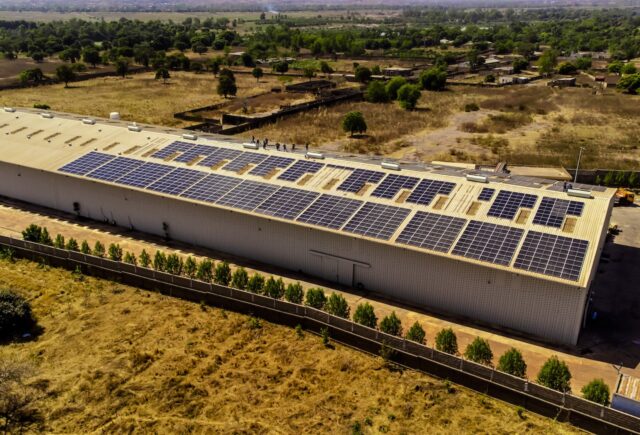The mobile money revolution has changed lives in some of the world’s poorest communities. But not everyone is reaping the benefits. Microfinance banks are trying to fill the gap.

In short
- Mobile money is now big business – global transactions totalled $767bn in 2020, according to the GSMA, the branch association of mobile operators worldwide.
- In the developing world, not everyone is reaping the benefits. Microfinance banks are trying to fill the gap.
- A major challenge for microfinance banks is how to digitalise useful concepts that they helped establish microfinance in the pre-digital age, such as teaching responsible financial behaviour and developing community involvement in decision-making.
Using basic mobile phones to carry out money transfers has become mainstream in the developing world. Cheaper smartphones and better network reach enable a wide range of financial transactions: from money transfers to savings and loans, benefit payments and international money transfers.
Mobile operators often use local agents to sell mobile money services and provide terminals to enable users to make cash deposits and withdrawals.
Mobile money is now big business – global transactions totalled $767bn in 2020, according to the GSMA, the branch association of mobile operators worldwide.
The sector is firmly established as a target for impact investors. For example, the Qatar Investment Authority (QIA) said on July 31 it would invest $200m in Airtel Mobile Commerce (AMC), a subsidiary of Airtel Africa.
Such investments enable operators to expand their networks and sales operations. But the focus is often on more remunerative investments and more creditworthy customers in and around large towns with a higher density of potential users.
Mobile money still costly for many
Andrée Simon, chief executive of microfinance network FINCA Impact Finance, says using mobile money services in rural areas of the developing world is too often still a frustrating and costly experience.
This is made all the more problematic by the lack of bank branches in many more rural areas and the reluctance of conventional banks to take on low-earning customers with unreliable incomes.
“In some countries, the cost of data has come down and connectivity is very good. But in sub-Saharan Africa, for example, the penetration of high-speed networks is very low, the cost of data extremely high and phones get disconnected a lot,” she says.
Finca Impact Finance is a global network of twenty microfinance banks and institutions offering financial services to more than two million people on low incomes in Africa, Asia and Latin America.
Nine of its subsidiaries offer mobile banking and e-wallet solutions. These include SimSim, a free-to-use e-wallet with more than 300,000 users in Pakistan, and CLICK, a mobile banking solution for smartphone and basic USSD users in the Democratic Republic of Congo.
USSD allows mobile banking transactions using a basic feature mobile phone by dialling a code. Users don’t need to have mobile internet data.
Rural communities missing out
Connectivity may improve, and service and equipment costs may fall for mobile customers in Africa and Asia in coming years, in much the same way as has happened in the developed world over the last three decades.
But these factors won’t be enough on their own to enable rural communities to get the most out of mobile banking.
Simon says the users who would benefit most dramatically from using FINCA’s digital services – around half of its clients are women running small businesses – may not be literate enough to read a mobile phone screen.
FINCA and other microfinance institutions operating digital platforms to complement their branch networks believe they are well placed to bridge the gap between the needs of their least advantaged customers and the commercial objectives of mobile money providers and conventional banks.
Digital platforms
ASA International is another microfinance institution developing its own digital financial platform. It intends to pilot the platform first to its clients in Ghana in 2022 to complement approximately 130 branches.
The company has 2.5 million clients in thirteen countries in Africa and Asia. Most are female, urban entrepreneurs who are unbanked and thus lack access to finance.
Dirk Brouwer, ASA International’s founder and chief executive officer, notes that mobile money providers can’t always compete with microfinance banks that have trained staff on the ground.
Whereas ASA International can offer a large number of loans of a few hundred dollars to unbanked clients, based on a detailed understanding of the prospects of a small business, mobile money services that do make loans would generally be dealing with much smaller sums based purely on the customer’s transaction and credit record with them.
Brouwer says these factors should make the microfinance sector just as attractive as network operators for those seeking to maximise the impact of an investment in the mobile financial services sector.
“Internet connectivity is important. A big impact investor can invest in mobile networks to make them accessible to a much broader segment of the population. But our clients are also interesting because we focus on financial inclusion and enabling our clients to earn more money with their businesses. That’s our focus,” he says.
Educational role
Simon of Finca Impact Finance notes that a major challenge for microfinance banks is to help perpetuate useful concepts on digital platforms that they helped establish in the pre-digital age, such as teaching responsible financial behaviour and developing community involvement in decision-making.
One example is the use of cross-guarantees, where clients in a community guarantee a loan made to another client, creating peer pressure on the borrower to keep up their repayments.
“The community aspect of financial services was about fundamentally encouraging strong financial behaviours,” she says.
“If you go to a purely digital model, the risk is that people make their decisions in the dark, both from an information perspective and in the sense that there’s no one to check them and ask whether it is really a good idea, beyond credit decisions made by the financial institutions.”
Simon says Finca Impact finance has been carrying out experiments across its network to encourage responsible borrowing, including gamification [creating mobile-based games for clients that include financial education content], sending educational messages to clients, and trying to incentivise people to learn more about financial services online, perhaps in exchange for a small discount on financial products.
“We have not landed on the right answer yet, and I don’t think anybody has. Most of the digital financial services out there are focused on consumer debt, which is important, but it’s certainly not going to build solid financial health for the world,” she says.
It’s good to chat
One aid to fostering collective decision-making and greater efficiency may be the greater use of communal messaging apps, which enable financial services providers to keep in touch with several clients at the same time.
ASA International’s Brouwer says there has been an increase in the use of messaging apps among clients during the Covid pandemic.
“In Africa, many of our clients have been communicating using WhatsApp, so we could envisage that we may consider transforming our client groups over time into WhatsApp groups,” Brouwer says.
“The ability to communicate with them via WhatsApp is more instant and effective than if we see them once a week or call them one at a time.”
Not going anywhere
Despite the inroads being made into rural banking by mobile money providers and mainstream commercial banks, microfinance leaders doubt their role will be made redundant any time soon.
“If we went out of business because people didn’t need us, that would be fantastic,” says Simon. “But there will always be a need for financial education and for watchdog institutions that hold the commercial sector accountable for transparency and ethical behaviour. For the foreseeable future, the need for what we do is not going to go away.”
Brouwer says he is excited by the prospect of a rapid evolution in the mobile financial services sector in the developing world.
“The mobile companies can add incremental services and the best providers are quite successful – MTN is providing a lot of extra services, for example,” the ASA CEO says.
“But financial services are not the core business of mobile companies, and it is very competitive. What we already see in Western Europe, the United States, China and the wealthier parts of India will come to our clients as well. It’s exciting because over the next ten years everything will be transformed,” he adds.
That doesn’t just mean cheaper, more capable smartphones and faster, more reliable connections. It means the potential for growth in app-based financial services offerings from many companies, competing with each other and the mobile networks to provide services tailored to the needs of low-income clients.
The microfinance banks believe they will continue to have a role to play in this revolution, well-placed to offer digital services based on their knowledge of their clients’ needs and to prioritise financial education in a way in which other service providers may not.





